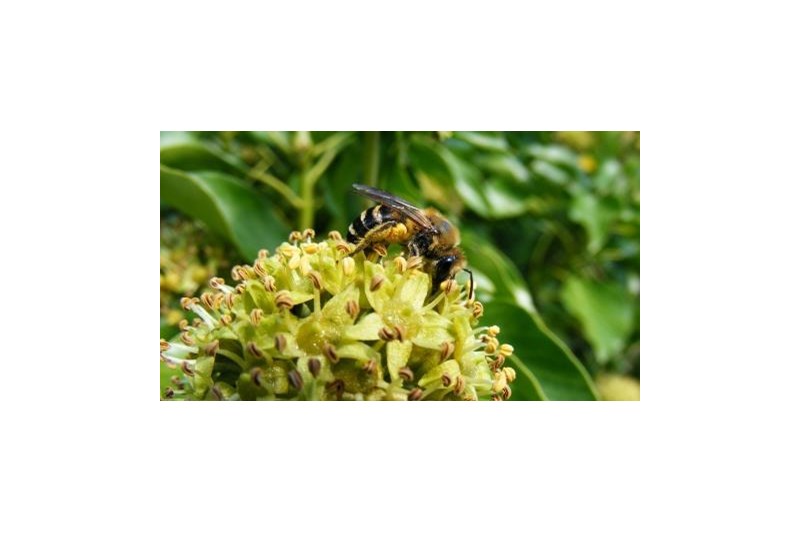If you are looking to be more proactive about protecting our natural world this year, being bee-friendly couldn’t be a better way to start. Here, Rebecca Twigg, who runs Kingdom of Sticks, offers five tips for making changes to your garden.
1. Create nesting opportunities
This is easier than you might think and is one of those things that ‘keeping a wilder spot’ in the garden is all about. Hollow plant stems, for instance, make the best BnB for ‘bugs’ of all kinds and bees are no exception. A bee hotel is a posh ready-made version of this, so if you are buying or making one, make sure its stems and canes have a good amount of seven to eight millimetre diameter holes; pollinators are as choosy as us humans when it comes to the perfect home dimensions.
Fix your bee hotel firmly on a south or east-facing wall at roughly head height. This should give you the best chance of having it occupied by leaf cutter bees or mason bees; two of the common species that use bee hotels. There are, of course, an array of other pollinators that will come to stay and these will be OK with any range from four millimetres up to 10 millimetre holes.
The other incredibly important nesting place for bees is in the ground. This is the thing that I find is overlooked more than anything else, so I am keen to get this in at the top of our list.
Typically, undisturbed ground in a well drained sunny slope, bank, bed or lawn, will be a prime location for ground nesting bees. Some emerge in spring and some are autumn emerging bees, like the Ivy bee in the photo, so leaving the ground undisturbed is key once you identify your reserved spot.
Saving a patch of ground, or indeed building up a mound of soil in your garden if you do not have a naturally positioned sunny spot, can become a fascinating project for all the family.
Tip: plant some creeping thyme to stabilise your ‘bee bank’ if you are making one yourself. Compost heaps, tufty grass and even bird boxes can all be valuable to a variety of bee species in a garden too.
2. Create forage opportunities
Bees and other pollinators are as diverse in their food preferences as birds are, so plant a variety of shapes/sizes of bloom, for each of the seasons including the winter months and make sure the flowers are not ‘doubles’ as these are of little value. Did you know that pollen is a protein source for bees and nectar is like a sugary energy drink to them, so they need plenty of both all year round?
If you are stuck for ideas on actual plant species, I recommend starting with a really varied herb patch in your garden, from santolina to sage; these plants are exceptional.
3. Put down the pesticides
Insecticides kill insects; we all accept this, so adopting a ‘weapons down’ mentality is key to healthy pollinator populations.
4. Actively learn more
Many people I meet think that protecting pollinators is only about keeping honey bees;
this is actually not an accurate picture and, in fact, their wilder cousins, solitary and bumblebees, need our help because they are so connected and vulnerable to what we do with our landscapes, wild and urban. It is not possible to ‘keep’ them in the same way we do honey bees. It is, therefore, essential we ensure diversity of species can flourish via our management of outdoor spaces.
If you have the time to get into identifying and recording pollinator species, you will help important citizen science programmes and really add another layer of value to what you do. Get started by looking at the UK-wide initiative for citizen science called Opal (Opalexplorenature.org).
5. Enjoy!
Only love and connection to a subject will create a deep desire to protect it, so remember to enjoy the journey. WL
• Find out more about Rebecca's passion for wild things, including more about her award winning bee trail at kingdomofsticks.com
This article originally appeared in the March 2020 issue of Wiltshire Life. To subscribe please click here.
Check out our Welcome to Wiltshire guide with things to do, charity updates and more
